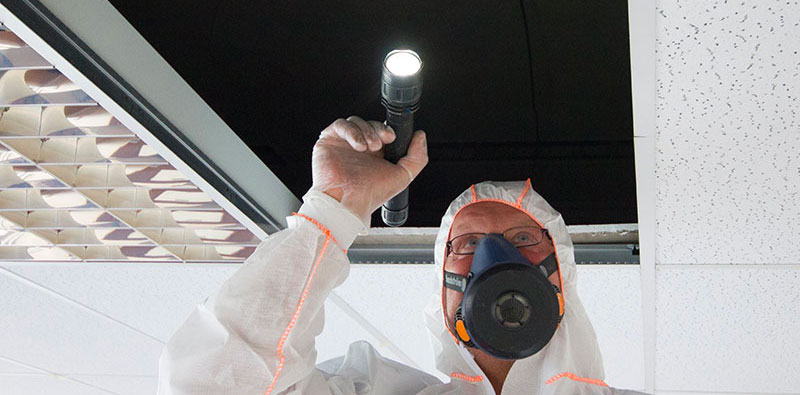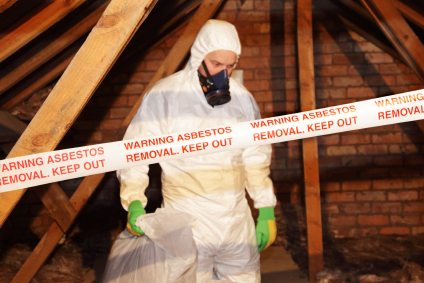Specialist Asbestos Testing: Accurate and Quick Outcomes for Your Peace of Mind
Expert Tips for Performing Trustworthy Asbestos Evaluating in Buildings and Structures
In the world of structure maintenance and safety and security, the relevance of carrying out reputable asbestos testing in frameworks can not be overstated. Comprehending the nuances of asbestos testing, such as the numerous tasting techniques and the critical distinctions in between DIY testing and professional solutions, is important for making certain exact outcomes.

Relevance of Asbestos Evaluating
Conducting asbestos screening in buildings and structures is essential for safeguarding the health and wellness and health of residents and employees. Asbestos Testing. Asbestos, once a prominent structure material recognized for its fireproof residential or commercial properties, has actually since been connected to severe health and wellness dangers, consisting of lung cancer and mesothelioma. Asbestos-containing products, if left uninterrupted, may not position an instant risk. However, when these products are harmed or deteriorate gradually, they can launch asbestos fibers right into the air, which, if inhaled, can bring about extreme wellness difficulties.

Tasting Techniques
Asbestos testing in buildings and structures demands precise tasting strategies to properly examine the visibility and condition of asbestos-containing products. One commonly made use of sampling technique is the point checking technique, where samples are accumulated from various building products believed to have asbestos, such as insulation, ceiling ceramic tiles, or floor covering. Utilizing the best sampling techniques is essential for acquiring specific asbestos screening results and ensuring the safety of owners in structures and frameworks.
DIY Screening Vs. Expert Solutions
When taking into consideration asbestos testing for buildings and structures, the selection in between do-it-yourself (DIY) testing and specialist solutions is a critical choice that can impact the precision and dependability of the outcomes. DIY testing sets are readily available for acquisition, offering an economical option for individuals wanting to analyze the visibility of asbestos in their building. These kits usually consist of guidelines on how to accumulate examples, which are after that sent to a research laboratory for analysis. While DIY screening may appear like a practical selection, it is important to keep in mind that the results pop over to this site might not constantly be as precise as those acquired through expert services.

Interpreting Examination Outcomes
The precision and integrity of asbestos examination results, whether gotten via specialist solutions or DIY testing, play a critical duty in figuring out the next actions for handling possible asbestos hazards in buildings and structures. Test results usually show the existence or absence of asbestos fibers in the experienced materials, along with the concentration of asbestos present if it is identified. Proper interpretation of asbestos test results is important for making sure the safety of passengers and workers in the structure and abiding with asbestos laws and guidelines.
Threat Monitoring Techniques
Properly executing proactive danger administration methods is important for safeguarding passengers and employees in structures with potential asbestos risks (Asbestos Testing). To start, carrying out comprehensive risk analyses is essential to determine the existence of asbestos-containing products (ACMs) and analyze the level of threat they present. This entails inspecting the building, gathering examples for screening, and examining the results to figure out the check that proper strategy
When the presence of ACMs is validated, it is necessary to establish and apply a comprehensive administration plan that details treatments for handling and controlling asbestos threats. This strategy must include steps such as asbestos encapsulation, removal, or recurring monitoring to stop direct exposure and lessen health and wellness threats. In addition, establishing clear communication networks to enlighten owners and employees about the visibility of asbestos and the protective click to investigate steps in location is important for guaranteeing their security.
Routine monitoring and review of asbestos risks are additionally vital components of reliable danger administration strategies. By staying proactive and cautious, structure proprietors and supervisors can create a safe atmosphere and avoid prospective asbestos-related carcinogen.
Verdict
Finally, carrying out dependable asbestos screening in buildings and frameworks is important for recognizing potential health risks and ensuring safety. By adhering to correct tasting techniques, taking into consideration the benefits of expert solutions over do it yourself screening, interpreting examination results accurately, and carrying out effective danger monitoring methods, people can efficiently handle and reduce the threats connected with asbestos direct exposure. It is important to focus on safety and security and follow strict screening procedures to shield the well-being of residents and workers.